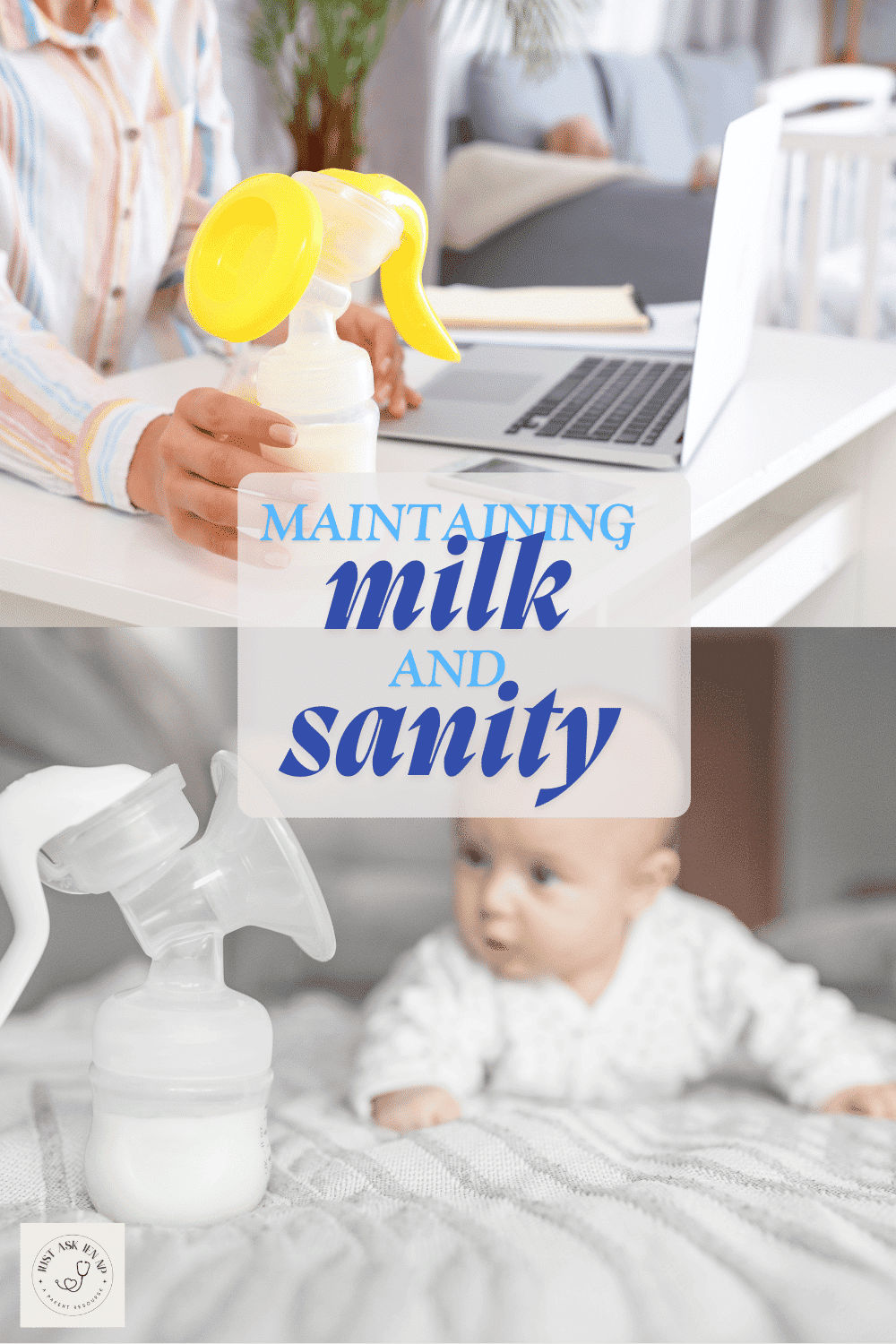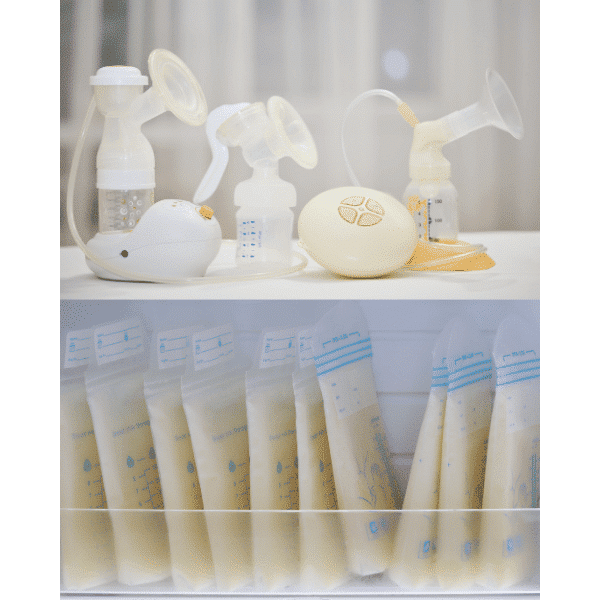The Complete Guide to Successfully Returning to Work While Breastfeeding in 2025

The transition back to work while breastfeeding can feel overwhelming, but with proper planning and support, you can successfully continue your breastfeeding journey. As both a working mother and breastfeeding advocate, I understand the unique challenges this transition presents. This comprehensive guide will walk you through everything you need to know about maintaining your breastfeeding relationship while navigating professional life.
Building Your Foundation: Preparation is Key
The key to a successful transition lies in preparation. Start preparing at least 2-3 weeks before your return date. This gives you time to establish a pumping routine, build a milk stash, and work out any potential challenges before adding workplace dynamics to the mix.
Practice using a bottle as well. Your little one will have a transition as well when you return to work while breastfeeding. Use this link to help your breastfed baby adjust to taking a bottle https://justaskjennp.com/breastfed-baby-to-a-bottle/
Preparation (2-3 Weeks Before Return)
Building Your Milk Stash
Begin pumping once daily, ideally after your morning feeding when milk production is typically highest. Store milk in 2-4 ounce portions – the amount your baby typically takes during a feeding. (Most babies will take 4-6 ounces in a feeding by the time a mom returns to work.) Label everything with dates and rotate your stock to ensure the oldest milk gets used first.
- Start pumping 2-3 weeks before return to work
- Best times to pump:
- First morning feed (30-60 minutes after)
- During baby’s longest sleep period
- Between regular feeds when milk supply is highest
Milk Storage Guidelines
Temperature Guidelines:
- Room temperature: 4 hours
- Refrigerator: 4 days
- Freezer: 6-12 months
- Store in 2-4 oz portions (typical feed amount)
- Label with date and time expressed
- Use this printable https://www.cdc.gov/breastfeeding/pdf/preparation-of-breast-milk_H.pdf

Essential Equipment Checklist
Success at work requires the right tools. Your pumping bag should include:
- Double electric breast pump
- Multiple sets of pump parts
- Hands-free pumping bra
- Milk storage containers
- Cooler with ice packs
- Cleaning supplies
- Photos of your baby (this can help with letdown!)
- Extra shirt
- Small towel
Understanding Your Workplace Rights
Knowledge is power. Federal law requires employers to provide:
- Reasonable break time for pumping
- A private space (not a bathroom)
- Protection from discrimination
- These rights extend for one year after birth
- State laws may provide additional protections
- Document all arrangements in writing
- https://www.dol.gov/agencies/whd/pump-at-work
Workplace Setup
Ideal Pumping Space:
- Private room with lock
- Comfortable chair
- Small table
- Electrical outlet
- Nearby sink if possible
- Mini-fridge (if available)
Creating Your Pumping Schedule
A typical 8-hour workday usually requires 2-3 pumping sessions. Here’s a sample schedule:
- Morning feed before work (6:00 AM)
- Mid-morning pump (10:30 AM)
- Lunch break pump (1:30 PM)
- Afternoon pump (4:30 PM)
- Evening feed after work (5:30 PM)
Daily Routine Management
Morning Preparation
Night Before:
- Clean pump parts
- Pack pump bag
- Prepare bottles for daycare
- Layout work clothes
- Pack extra nursing pads
Morning Of:
- Nurse baby before leaving
- Pack fresh ice packs
- Double-check supplies
- Wear nursing-friendly clothing
Pumping Session Routine
- Set up equipment (5 mins)
- Pump (15-20 mins)
- Store milk properly
- Clean pump parts
- Pack up (5 mins)
Milk Storage at Work
Best Practices:
- Use insulated cooler bag
- Keep ice packs in contact
- Store away from other items
- Label all containers
- Consider backup storage location
Maintaining Your Milk Supply When Returning to Work While Breastfeeding
Supply Protection Strategies
- Stay hydrated (keep water bottle handy)
- Eat regular, nutritious meals
- Don’t skip pumping sessions
- Look at photos/videos of baby
- Try to relax during sessions
- Massage breasts while pumping
- Use compression techniques
- Keep consistent schedule
Common Challenges & Solutions
Supply Dips:
- Add pumping session
- Power pump on weekends
- Check flange fit
- Replace pump parts
- Consider supplements
- For a complete list of herbal supplements for breastmilk production, check this link https://justaskjennp.com/herbal-supplements-for-lactation/
Time Management:
- Block calendar for pumping
- Set alarms/reminders
- Prepare for meetings
- Communicate needs clearly
- Keep backup supplies at work
Supporting Your Baby’s Caregivers

Clear communication with caregivers is crucial. Provide written instructions for:
Daycare Instructions
Provide Written Guidelines:
- Feeding preferences
- Milk storage requirements
- Proper bottle preparation
- Paced feeding technique
- Hunger cues
- Emergency contacts
Bottle Feeding Tips
For Caregivers:
- Use paced feeding method
- Small frequent feeds (2-4 oz)
- Hold baby semi-upright
- Never force finish bottle
- Watch for fullness cues
- Use slow-flow nipples
Weekend Management to Prepare for Work While Breastfeeding
Maintaining Schedule
- Maintain your regular nursing relationship
- Pump one session daily
- Replenish frozen stock
- Clean/sanitize equipment
- Prepare for the upcoming work week
Emergency Planning
Keep at Work:
- Extra pump parts
- Backup manual pump
- Extra storage containers
- Clean shirt
- Non-perishable snacks
- Pain relief medication
Conclusion
Returning to work while breastfeeding is a significant transition, but with proper preparation and support, you can successfully maintain your breastfeeding relationship. Remember that every drop of breast milk counts, and any amount you can provide is beneficial for your baby. Be patient with yourself as you establish your new routine, and don’t hesitate to seek support when needed.
The most important thing to remember is that you’re not alone in this journey. Many mothers have successfully navigated this transition, and with proper planning and support, you can too. Focus on what works for you and your baby, and be proud of your commitment to continuing your breastfeeding journey while balancing work responsibilities
